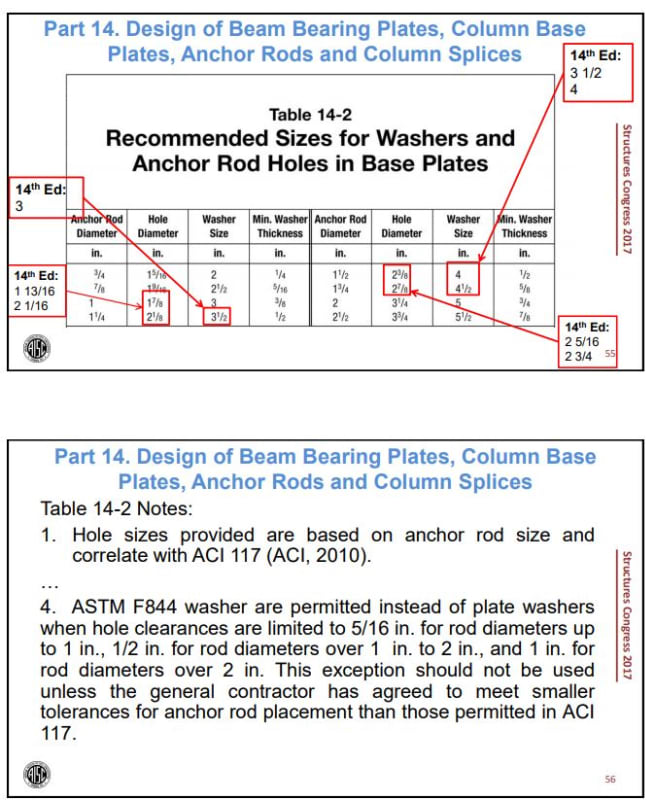oengineer
Structural
- Apr 25, 2011
- 731
Is it ever acceptable to eliminate welded washers for a high strength anchor bolts for brace frame columns? The contractor has installed the anchor bolt at two baseplates that does not have the required projection for seating of the nut. Both locations have the same condition due to improper elevation of the anchor bolts but all other anchor bolts at these locations have proper connections. The contractor is asking if it is okay to eliminate the weld washer at each of these locations. The anchor bolts are 1.75" diameter and the tension reactions at the brace frames are over 200 kips.
Based on what I read in AISC Design Guide 1 for base plates and anchor bolts, washer are recommended for high strength bolts subjected to resist tension loads. My 1st thought is to reject the contractor's request and have them install the welded washers. To deal with the projections issue I am think of suggesting Anchor rod extension using coupling nut or directly welding the rods together is to join the extra length of threaded rod using lap plates.
Please let me know any other thoughts. Suggestions/comments are appreciated.
Based on what I read in AISC Design Guide 1 for base plates and anchor bolts, washer are recommended for high strength bolts subjected to resist tension loads. My 1st thought is to reject the contractor's request and have them install the welded washers. To deal with the projections issue I am think of suggesting Anchor rod extension using coupling nut or directly welding the rods together is to join the extra length of threaded rod using lap plates.
Please let me know any other thoughts. Suggestions/comments are appreciated.


